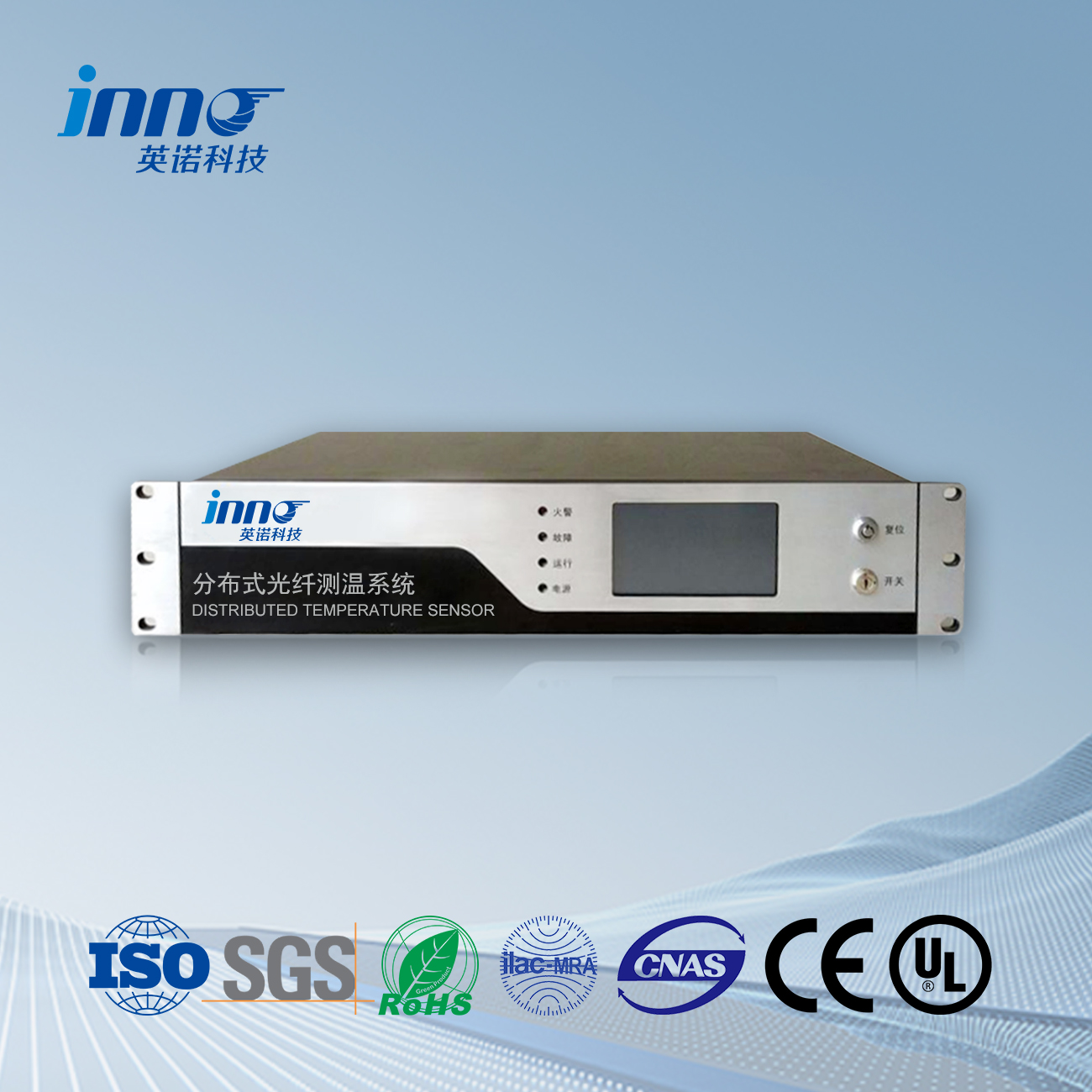אין די לעצטע יאָרן, distributed fiber optic temperature measurement systems have developed rapidly. They are distributed sensors that measure the temperature field around temperature sensing fibers over long distances in real-time. The system is based on Raman scattering effect and OTDR technology, and plays an extremely important role in daily life, avoiding many accidents.
פונאנדערגעטיילט פיברע אַפּטיק טעמפּעראַטור מעזשערמאַנט סיסטעם (DTS system) is a temperature measurement system developed based on OTDR and Raman scattering principles. Its temperature sensor is optical fiber (usually made into optical cable). DTS utilizes the Raman effect of optical fibers, which modulates the backward Raman scattering light transmitted in the fiber by the temperature field at the fiber laying position (space). After photoelectric conversion and signal processing, real-time temperature information of the temperature field can be retrieved. The composition of DTS system generally includes high-power pulse laser light source, fiber optic wavelength division multiplexing coupler, sensing optical cable, photodetector, signal amplification module, data acquisition module, and system host (PC or industrial control computer). Due to the distributed nature of DTS, which means that optical cables are continuously laid on the site that needs to be monitored, and the distance is relatively long (usually a few kilometers), DTS has significant advantages compared to other temperature measurement systems. The system is currently widely used in various fields that require fire monitoring, such as tunnels, power plants, steel mills, and mines.
Compared with traditional temperature sensors, fiber optic temperature sensors have many advantages, such as: light waves are not affected by electromagnetic interference; Fiber optic has a wide operating frequency and a large dynamic range, making it a low loss transmission line; The optical fiber itself is not charged, has a small volume, is lightweight, easy to bend, and has good radiation resistance. דעריבער, fiber optic temperature sensors are particularly suitable for use in harsh environments such as flammable, יקספּלאָוסיוו, strictly limited space, and strong electromagnetic interference, solving temperature measurement problems that traditional methods cannot solve.
Distributed fiber optic temperature sensing technology mainly utilizes the correlation between the intensity of Raman scattering light signals in optical nonlinear effects and temperature. By detecting and analyzing the intensity of Raman scattering light signals generated by excitation at different positions of the fiber, temperature measurement at different positions of the fiber is achieved. In distributed fiber optic temperature sensing technology, fiber optic is both a sensor and an information transmission medium. This technology has the characteristics of flexible sensor structure, continuous distribution, long monitoring distance, and high working temperature. דעריבער, it has broad application prospects in fields such as fire protection and early warning, oil well survey, אאז"ו ו.
פיברע אַפּטיק טעמפּעראַטור סענסער, ינטעליגענט מאָניטאָרינג סיסטעם, פונאנדערגעטיילט פיברע אַפּטיק פאַבריקאַנט אין טשיינאַ
 |
 |
 |
 INNO פיברע אַפּטיק טעמפּעראַטור סענסאָרס ,טעמפּעראַטור מאָניטאָרינג סיסטעמען.
INNO פיברע אַפּטיק טעמפּעראַטור סענסאָרס ,טעמפּעראַטור מאָניטאָרינג סיסטעמען.
